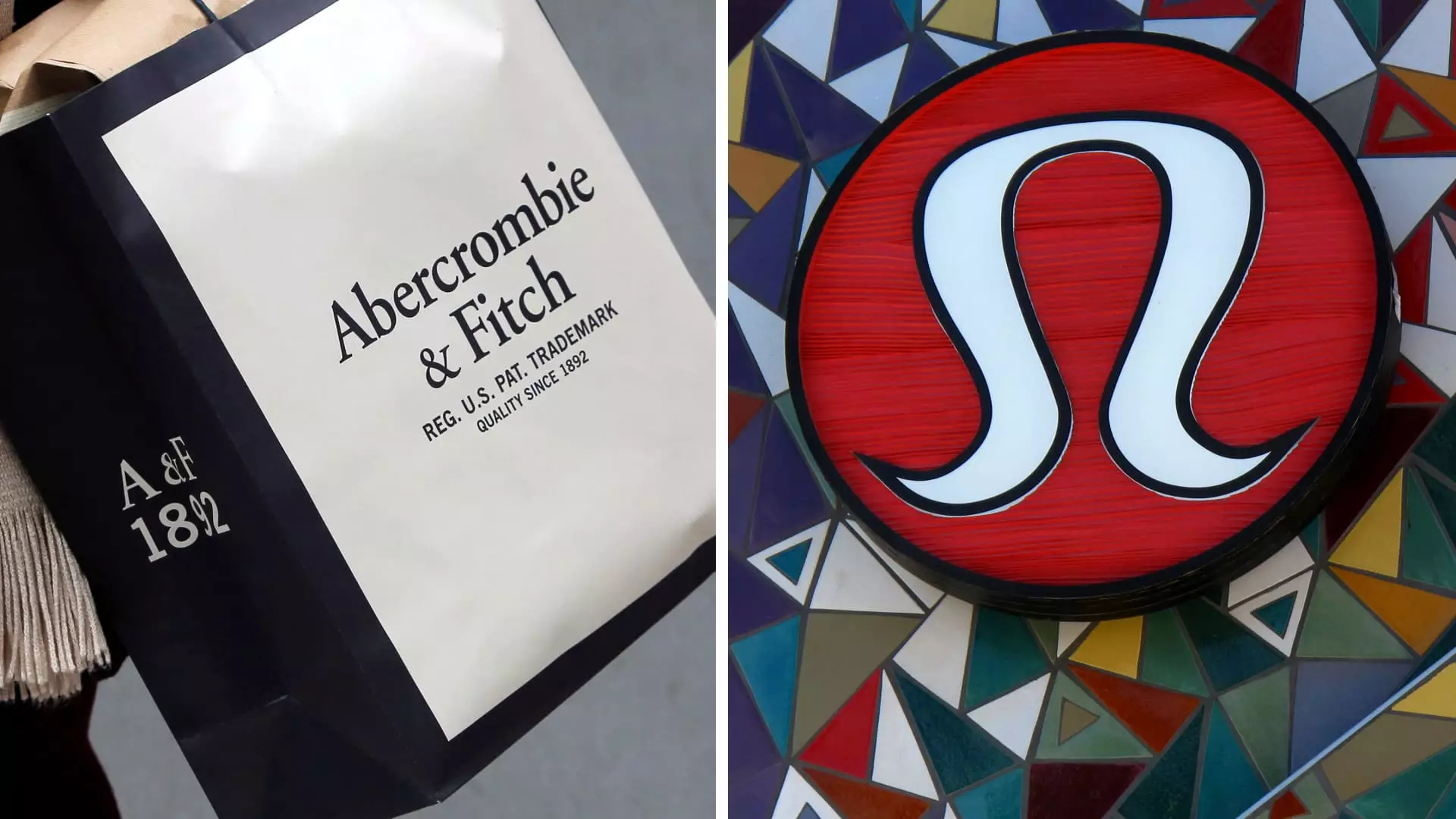As the 2023 holiday shopping season kicked off, leading retailers delivered results that were, on the surface, encouraging. Despite recording better-than-expected sales in the early stages of the period, many retailers experienced a downturn in stock prices. This juxtaposition raises significant questions regarding investor sentiment and market expectations. Lululemon, Abercrombie & Fitch, and American Eagle were among the companies that upgraded their fourth-quarter sales forecasts, citing robust consumer demand during this pivotal shopping period. Urban Outfitters also reported solid growth but faced challenges similar to those of industry giant Macy’s, which has struggled more than anticipated during this critical quarter.
The mixed reactions in the stock market signal a growing impatience among investors, who seem to be recalibrating their ambitions following the pandemic-fueled retail boom. Notably, Abercrombie’s stock saw a staggering decline of about 17%, highlighting concerns about the sustainability of its rapid growth as the company moves beyond a period of explosive expansion.
Lululemon, a beacon of success in the athleisure market, projected sales growth between 11% and 12%, raising its forecasted range to $3.56 billion and $3.58 billion. This upward adjustment reflects a strong holiday response from consumers, which was articulated by finance executive Meghan Frank. Additionally, the company expects to enhance its earnings per share for the fourth quarter, revealing a keen focus on both revenue growth and profitability.
In contrast, Abercrombie’s outlook—while marginally improved—serves as a stark reminder of the challenges posed by increasingly difficult year-over-year comparisons. The apparel retailer revised its net sales growth expectations to between 7% and 8%, a noticeable dip from the stellar 21% growth observed last holiday season. CEO Fran Horowitz emphasized a strategic shift towards profitability, suggesting a future in which sustainable growth may be prioritized over purely aggressive sales targets. This pivot echoes a broader trend across various sectors where long-term health is favored over short-term gains.
The dismal performance of Macy’s serves as a cautionary tale amid a sea of otherwise positive news. The department store, once a cornerstone of American retail, expressed expectations of fourth-quarter sales falling below previous estimates, resulting in an early trading drop of over 6%. This downturn not only reflects Macy’s struggles but also offers insight into the changing dynamics of consumer preferences, with a notable shift towards online shopping. The company must adapt to a landscape where traditional brick-and-mortar models are increasingly challenged by their digital counterparts.
Similarly, Urban Outfitters presented a combination of setbacks and successes, reporting a 10% growth in net sales but noting underperformance in its flagship stores. The fact that its rental service, Nuuly, recorded a remarkable 55% increase in sales underscores the growing demand for flexible, on-demand consumer services—suggesting a potential future where retail models need to integrate convenience and adaptability more profoundly.
Analyzing the consumer behavior during the holiday shopping season, influences from broader economic contexts cannot be overlooked. The National Retail Federation projected modest sales growth of 2.5% to 3.5%, indicating a more tempered retail environment compared to the heady post-pandemic years. This cautious outlook reflects inflationary pressures and their impact on consumer spending habits, which are currently shifting towards essential needs and discretionary spending on value-driven products.
Mastercard SpendingPulse’s report indicating a 3.8% year-over-year increase in holiday sales, excluding automotive sales, suggests that while consumers are willing to spend, they are doing so with greater consideration and restraint. This hesitance hints at underlying economic apprehensions that may linger in the minds of consumers as they make purchasing decisions.
While early holiday results from significant retailers show resilience and a capacity for growth, they are tempered by stock market reactions that reflect investor skepticism. The retail landscape of 2023 appears to be navigating a profound transition, marked by shifts in consumer behavior and the evolving marketplace.
The agility of companies like Lululemon and Abercrombie will be crucial in determining their long-term trajectories in an environment characterized by increased competition and evolving consumer expectations. As companies prepare for the upcoming ICR Conference and beyond, maintaining a focus on profitability while addressing consumer demands may be essential to sustaining growth in this unpredictable market. The holiday season may not yield the blockbuster figures of previous years, but for those willing to adapt, opportunities for meaningful engagement with consumers still exist.

